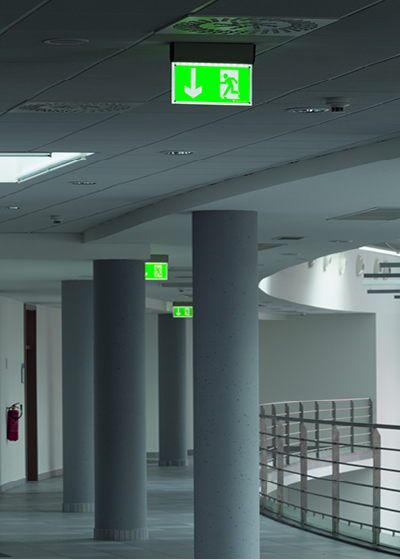



In the event of power failure due to fire or other emergency, anyone still inside your building may need assistance to make a safe exit. A sudden loss of light in an already compromised situation can create panic and confusion. It can also create physical danger where obstacles cannot be seen. This is when emergency lighting makes all the difference, literally between life and death. Servicing your emergency lighting protects its ability to perform at a moment’s notice, when really needed.
But how often should this be done?
Read on..
As the responsible person, you must provide an emergency lighting system for people attempting to leave a building during an emergency. This is one of your statutory duties. If you fail to fulfil this duty, be prepared for the consequences: a hefty fine or prison sentence.
The legal requirement states, ‘Emergency routes and exits requiring illumination must be provided with emergency lighting of adequate intensity in case the lighting fails.’ The system you choose should tick all these boxes: be visually acceptable, easy to operate and simple to maintain.
Don’t let this worry you. At CES we’re proud of our commitment to helping customers get this right. We frequently go well beyond the legal requirements, planning the installation piece by piece to suit your premises
The law states that you should test your emergency lighting ‘at regular intervals’ but what that means is not clearly stated. This is for good reason – as with many matters related to fire safety, there is no ‘one size fits all’ solution to any problem. All buildings are different and therefore, they all have different requirements. A large, complex emergency lighting design may need servicing at six-monthly intervals, while a smaller, simpler layout will require less attention.
Regardless, the Regulatory Reform (Fire Safety) Order 2005 states that you must at a bare minimum, fully test your emergency system once a year. In addition, it asks that you perform a test once a month. A monthly test involves you creating a momentary loss of power to assess how your emergency lighting performs. Ideally, your back-up lights should spring into action as designed. If they don’t, this is a warning that further investigation may be needed.
Sounds confusing? Don’t worry. CES M&E Services can arrange a site visit and advise you of a service routine that’s suitable for you, ensuring you are legally compliant at all times
Some of our clients